Six hours at hands of Hamas - new accounts reveal how Israeli base fell on 7 October
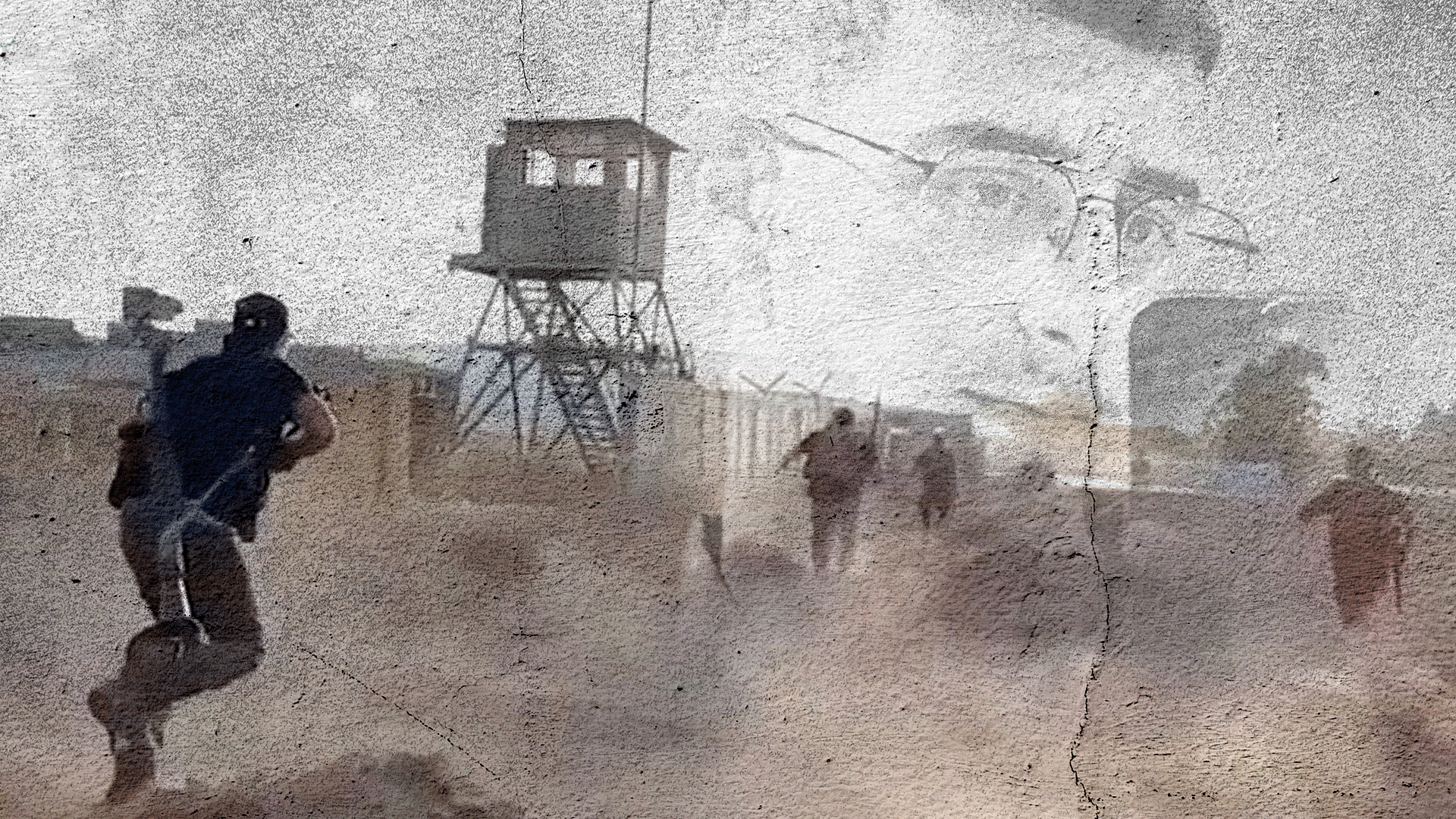
- Published
One year on from the 7 October Hamas attacks, tough questions are still being asked within Israel about the deadliest day in its history, when the country's powerful army was caught off guard and swiftly overwhelmed.
The BBC has heard accounts given to families of what happened at one military base that guarded the border with Gaza.
The Nahal Oz base was overrun by Hamas gunmen on the morning of 7 October and more than 60 Israeli soldiers are reported to have been killed - with others taken hostage.
Israel’s military is yet to publish its official inquiry into what happened there that day, but it has already briefed relatives of those killed there, and some have shared those details with the BBC.
This is the closest we have to an official account by Israel’s military of what happened on the day.
In an attempt to further piece together events, we have also spoken to survivors, seen messages from those who died, and listened to voice recordings reporting the attack as it happened, helping to build a picture of the speed and ferocity of the invasion.
The BBC has found:
Suspicious activity was spotted by many soldiers at the base before 7 October, not just the young women whose job it was to monitor border cameras
Soldiers noticed an abrupt stop to Hamas activity in the days before the attack
Many Israeli troops there were unarmed and official protocols had soldiers standing back when under attack, instead of advancing
Some surveillance equipment was either out of action or able to be destroyed by Hamas with ease
The details we have established raise questions - including why so few soldiers were armed at a base so close to the border, why more wasn’t done to respond to the intelligence and warnings that had been received, how it took so long for reinforcements to arrive, and whether the very infrastructure of the base had left those there unprotected.
We put our findings to the IDF, who responded to say it was in the midst of a “thorough investigation into the events of October 7th, including those in Nahal Oz, and the circumstances preceding”.
___
On 7 October, Sharon - not her real name - began her shift at Nahal Oz, about a kilometre from the Gaza border fence, at 04:00.
She was part of the base’s all-women military unit - known as Tatzpitaniyot in Hebrew - and their role was to study live surveillance footage captured by cameras along the fence.
The women worked in shifts in the base’s war room, or Hamal, watching Gaza through a bank of monitors around the clock.
The Hamal is a windowless room protected by a solid door and blast walls, with strict security protocols.
The IDF has told families of people on the base that day that many military staff were unarmed.
Gen Israel Ziv, former head of the IDF's Operations Division, told the BBC that during his service, there would never have been unarmed soldiers in border areas.
“It doesn’t make sense… The soldier is about the weapon,” he says.
The armed staff at Nahal Oz that day included a unit of infantry soldiers from the IDF’s Golani brigade.
The BBC has previously reported that the Tatzpitaniyot had noticed an escalation in suspicious activity on the other side of the fence, but we have now established that these concerns were also shared by other soldiers at the base from different units.
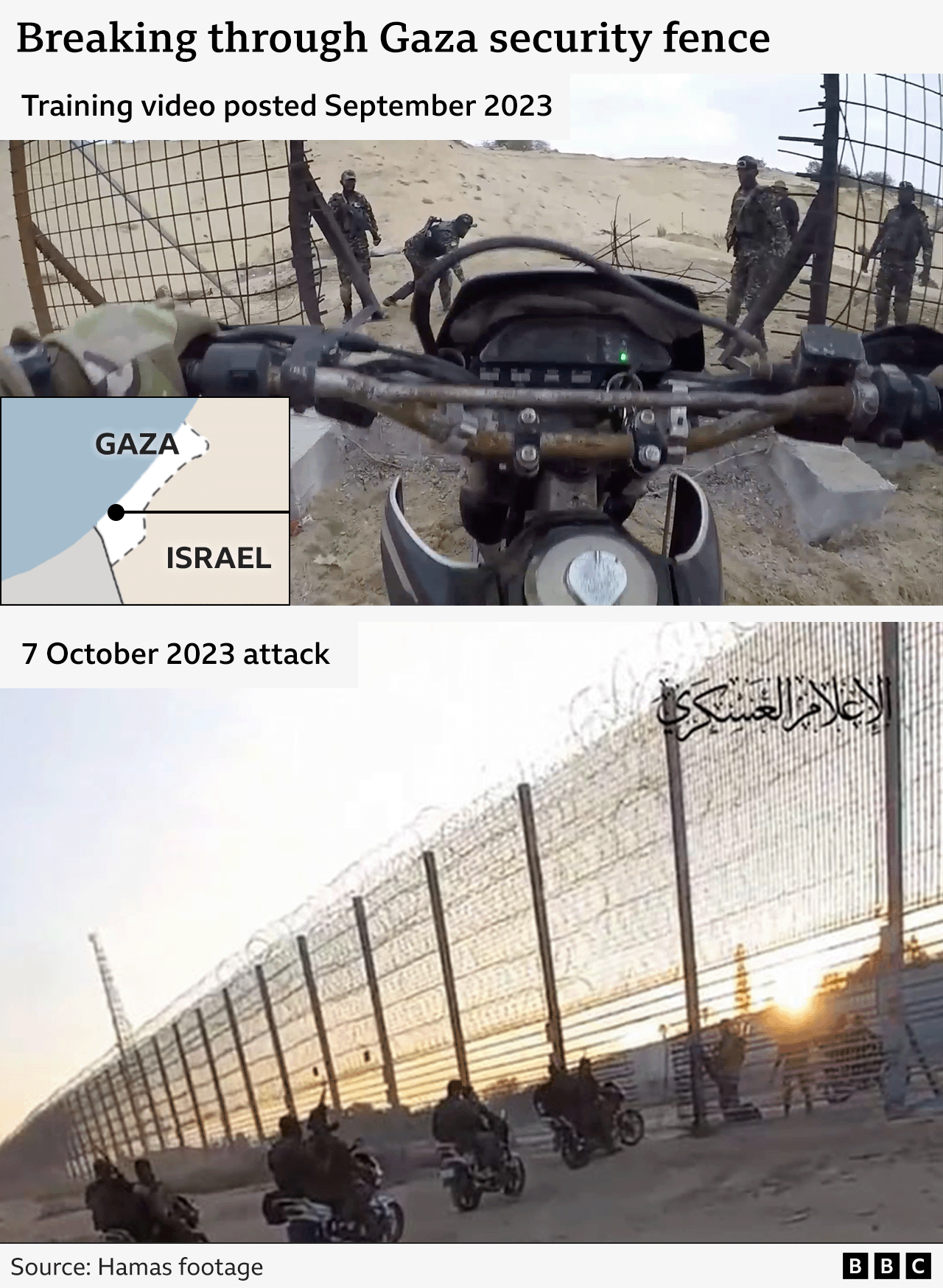
In the days shortly before 7 October, however, things had gone quiet.
“There was nothing and that was frightening us,” one infantry soldier stationed at the base recalls.“Everybody felt that something was strange. It didn’t make sense.”
The IDF's failure to grasp what was happening was down to “a lot of arrogance”, says Gen Ziv, the thought that “Hamas wouldn’t attack, wouldn’t dare, and that even if so, they are not capable”.
“We went to sleep on the 6th thinking there’s a cat over there and we woke up on the 7th and there’s a tiger.”
At 05:30, members of the Golani prepared to begin a jeep patrol along the Israeli side of the fence - something they did before dawn every morning. But they were then instructed by their superiors to delay the patrol and stand back because of a threat of anti-tank missiles, three of them have told the BBC.
“There was a warning. It was forbidden to go up the route next to the fence,” one recalls.
Another Golani, 21-year-old Shimon Malka, said such a warning was unusual but not unheard of, so they gave it little thought.
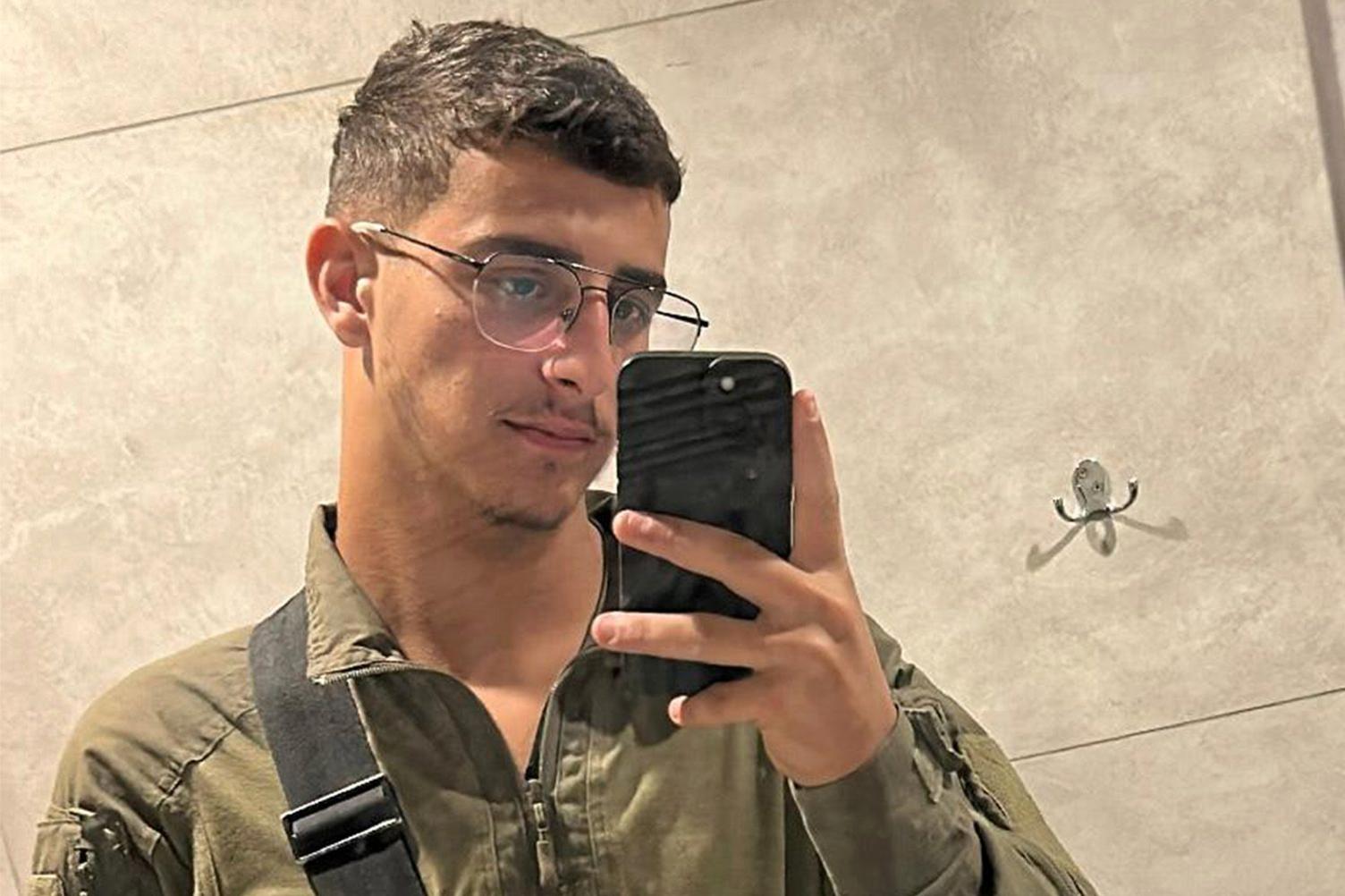
IDF infantry soldier Shimon Malka: “For us, it was just another day. I remember at 6 o’clock saying we’ll go back to sleep because it’s Saturday.”
Gen Ziv says it is standard IDF protocol to stand people back during suspected attacks like this so they can “avoid being exposed as a target”. But, he says, “Hamas realised that and used it” to their advantage.
He said the base should have been equipped with positions that the Golani could safely respond from.
“There are very simple techniques to cover soldiers so they’re under cover but they’re still in a position to react, to not lose sight,” he said.
As the Golani waited away from the fence, Sharon began seeing movements among Hamas fighters. But they seemed nothing other than routine - “they also have shifts.”

By 06:20 Hamas had begun shooting rockets, but again Sharon says this did not seem immediately alarming - she had experienced rocket attacks before and the base was well-shielded against them.
“It’s usually five minutes of shooting and then a break,” she says.
But this time, there was no break.

At about 06:30, Sharon says she could see Hamas forces beginning to close in.
The Tatzpitaniyot radioed through to the ground forces to alert them.
“All stations, four people running to the fence, copy,” one of the young women announced, her voice shaking slightly. "I am identifying two armed people running to the fence, copy.”
Listen to Roni Eshel's radio message: "I am identifying two armed people running to the fence." Roni later died in the 7 October attacks
About the same time, Shimon heard the code words for a rocket attack through his radio. His commander ordered they jump from their jeep into a Namer - a type of Israeli armoured personnel carrier - and head towards the fence.
But he couldn’t see any incursions and assumed it was just a drill.
This so-called iron wall had long been viewed by the IDF and people across Israel as impenetrable, and yet bases along it began reporting breaches.
Each of the Tatzpitaniyot on shift at Nahal Oz witnessed between two and five breaches of the section of border fence they were responsible for monitoring, says Sharon. They watched as Hamas fighters made their way inside Israel.
Gen Ziv says the ease with which fighters had crossed the fence showed the flaws in a barrier perceived to be impenetrable.
“As you saw, two truck-loads could come and push it. It was nothing. Even if there was a minefield of 50 or 60 metres over there, it would have delayed Hamas for a few hours.”

Shortly before 06:40, an observation post at Nahal Oz was hit and damaged by a rocket, according to IDF family briefing notes shared with the BBC.
A sniper-sighting system was put into action from the Hamal - the nerve centre of the base - and an officer attempted to shoot remotely at gunmen trying to cross the border, the IDF told families.
Infantry officers joined the Tatzpitaniyot in the Hamal, too. Sharon remembers one commander arriving in her pyjamas.
And then, as gunmen continued to shoot at surveillance cameras, the monitoring screens in the Hamal started to go dark.
The fact that Hamas had been operating in plain sight of these surveillance cameras, along the border in the weeks before, was tactical, says Gen Ziv, in order to “normalise things”.
Just 100 metres from where the Tatzpitaniyot were working, Alroy - one of the five IDF observation balloonists on site that morning - was woken by the rockets and the sirens, his father Rafi Ben Shitrit told the BBC.
The IDF later provided details of an initial investigation to Alroy’s family about what happened that day.
The balloon at Nahal Oz offered a deeper view into Gaza, and was supposed to be operational 24 hours a day.
But on 7 October it was one of three along the border that were out of action.
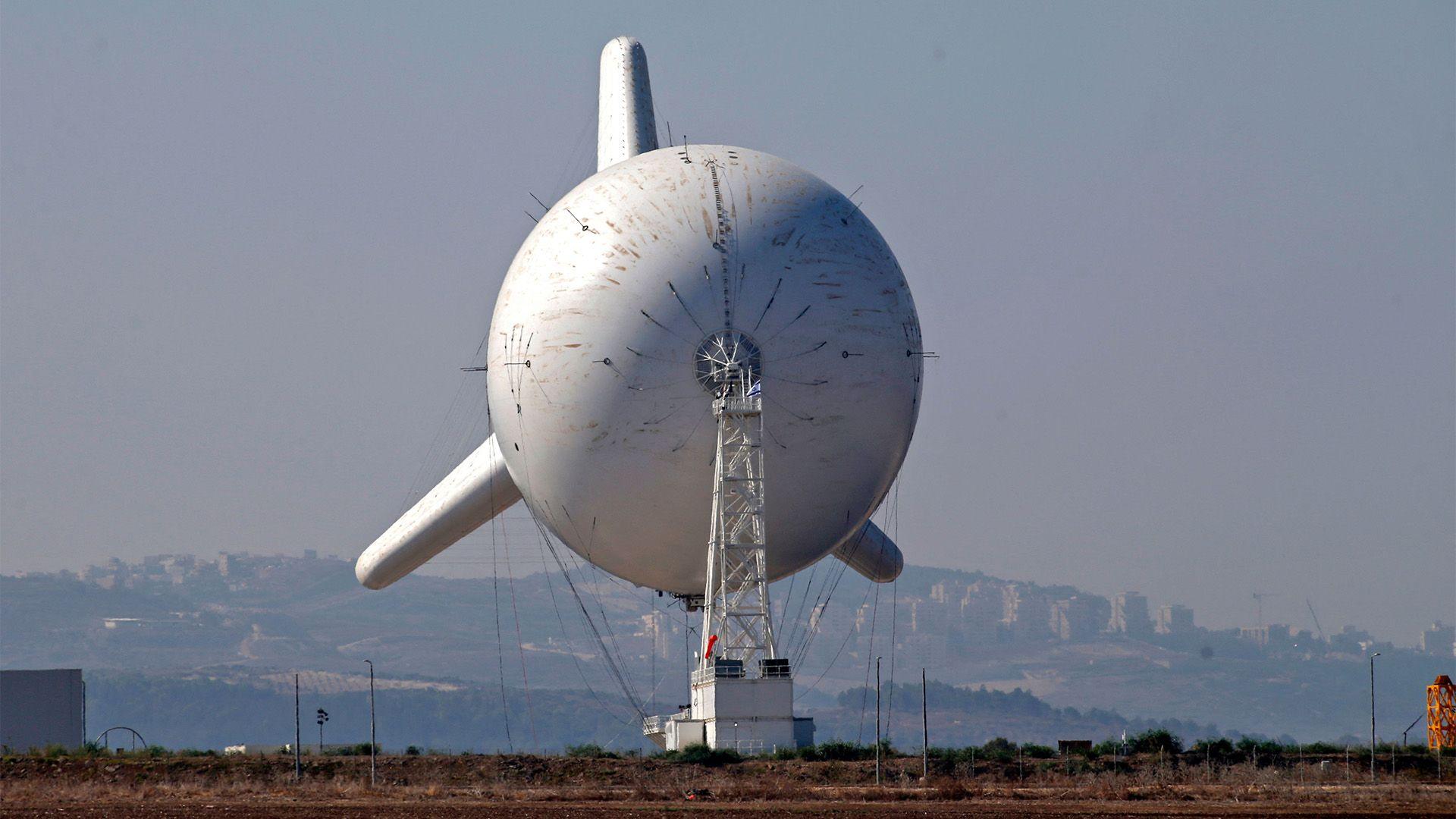
IDF observation balloon pictured in 2021
“The balloon in Nahal Oz didn't work and no-one was stressed, they were told it would be fixed on Sunday,” says Mr Ben Shitrit.
“There was an atmosphere like: ‘Hamas is deterred, even if something happens it's a terrorist infiltration or at most a terrorist squad.’”
Back at her surveillance point, Sharon carried on frantically communicating with soldiers on the ground.
“I cried and announced, simultaneously,” she says.
She remembers that the commanding officer yelled for “quiet” because some of the young women were losing focus amid the horror.
At the fence, Shimon says he followed the radio directions. He still couldn’t understand why the young woman’s voice he was hearing sounded so panicked.
“I could feel the stress, but I couldn’t see anything.”
When his unit reached the place the Tatzpitaniyot had directed them to, they saw Hamas trucks breaking through the fence.
“They started to shoot at us. Maybe five trucks.”
The soldiers shot back and ran over those on motorbikes.

Shortly after 07:00 came the moment everyone feared and nobody could imagine. Hamas gunmen were at the door of the Hamal.
“Get up, the terrorists are at the door,” Sharon remembers being told.
The Tatzpitaniyot were ordered to abandon their positions and head to an office inside the war room.
Gen Ziv says that those higher up in the military did not put enough emphasis on defending the bases themselves, focusing instead on external patrols.
“That was part of the whole mess because once the enemy surprised them and went into the base they were not ready. The whole thing collapsed,” he says.

At about 07:20 what was known as the shield - a bomb shelter outside the Hamal - was attacked.
Among those sheltering inside were some off-duty Tatzpitaniyot, who were being protected by “four female warriors”, according to a WhatsApp message sent at 07:38 by one of the Tatzpitaniyot sheltering there and seen by the BBC.
There were no further messages from her in the group.
The IDF told families that these “female warriors” were the only armed people hiding in the shelter - and they kept Hamas fighters at bay with their gunfire until a grenade explosion killed one of the commanders and injured others inside.
At this point, about 10 of the soldiers managed to escape the shelter and locked themselves in the accommodation barracks. Everyone else in the shield was either killed or captured by Hamas.
Shimon and his commander headed back to the base, but they still weren’t aware of the scale of what was happening.
The IDF would later brief the family of one of those killed at Nahal Oz that the attack on the base was begun by drone strikes, and action by 70 fighters from four directions, and that scores more joined as the morning went on.

Hamas drone strike targets vehicles inside the base.
Up and down the Gaza Strip, thousands crossed into Israeli territory.
On his way back to base Shimon says he began to comprehend the scale of the attack.
“When we got to the base, everything was burned,” he says.
In the office inside the Hamal, Sharon says the group of about 20 soldiers tried to calm each other down.
Meanwhile, they made repeated attempts to call for more support.
“I guess [someone] said something like ‘There’s no backup, no-one can come,’ and I remember my officer said ‘We don’t need backup, we need rescue.’”

Shortly before 08:00 an Israeli drone, known as a Zik, arrived, but it had difficulty distinguishing between Israeli soldiers and Hamas, according to the IDF account, which meant it was slower to attack its intended targets.
At about the same time, an attack began on the Hamal, with lots of shooting. Those armed fought at the doors of the building to prevent Hamas from getting inside. The fighting continued for about four hours.
Meanwhile, Shimon says he and other soldiers fighting at the base were completely outnumbered. There was no sign of reinforcements.
“It was all vague.”
At about 09:00, the Golani headed to the base’s dining room where the Tatzpitaniyot had told them most of the gunmen were hiding.
Relatives would later be told by the IDF that there were 150 gunmen to every 25 combat soldiers entering Nahal Oz that day.
“What Hamas was doing that morning was swarming,” says Gen Ziv.
“There were over 70 different breaches… over 3,000 terrorists… They knew they didn’t have the quality so they had to go quantity.”
A video, which Israeli media reports was filmed around this time, shows young surveillance officers at Nahal Oz, who had been captured by armed Hamas.
“You dogs, we will step on you,” one man is heard saying as the women’s hands are tied, their faces against the wall.
Dr Ayelet Levy's daughter Naama was taken hostage from Nahal Oz by Hamas. "My daughter is a very strong girl," she says
Nineteen-year-old Naama Levy, who had only started at the base the previous day, pleads that she has “friends in Palestine”, her face covered in blood.
The footage shows the women being dragged into a waiting vehicle and driven away.
It is devastating for Naama’s mother to watch. “The wounds, the blood, what she was saying, what the terrorists were saying to them, the horror of those moments,” says Dr Ayelet Levy.
Gen Ziv says the Tatzpitaniyot at Nahal Oz “were amazing - the mistake was the system, the commanders, not them”.

More than three hours after the attack had begun, at 09:45, an IDF helicopter started firing at the Hamas gunmen, officers told grieving relatives. It fired into the base 12 times.
Shimon and six others, including their commander, drove out of the base and returned in formation on foot. He says they were fired on “from all directions”.
Through the sound of automatic gunfire would come a series of single shots, fired by a Hamas sniper they couldn’t see.
“Every time he shot, one of my friends got a bullet in the head,” he says.
Shimon says he was the only one of those fighting alongside him to survive, and he too, had a near miss.
“A bullet passed right by my head… I could hear the bullets hitting the concrete around me and feel the heat from them.”
At this point, he says his radio was no longer operational.
Gen Ziv describes the day as a “perfect storm”.
“For so many hours the backup was not there because nobody knew exactly what was going on and where to send the backup,” he explains.
Shimon escaped the scene and moved to a sniper's position before joining with soldiers from another unit who went to protect a kibbutz.

Back in the Hamal, or war room, there was a significant development at about 11:00.
The electricity was cut which meant the locks to the doors, which were on an electric system, were released. It left the war room wide open, according to the IDF account given to several families. Hamas fighters began shooting inside and throwing grenades.
One was killed in a face-to-face knife fight with a Golani soldier, the IDF told families.
Gen Ziv said at the point that soldiers were relying on door locks for their safety, the broader military system had “already failed”.
In the IDF’s briefing to families it said “terrorists threw a flammable substance into the Hamal and set it on fire”.
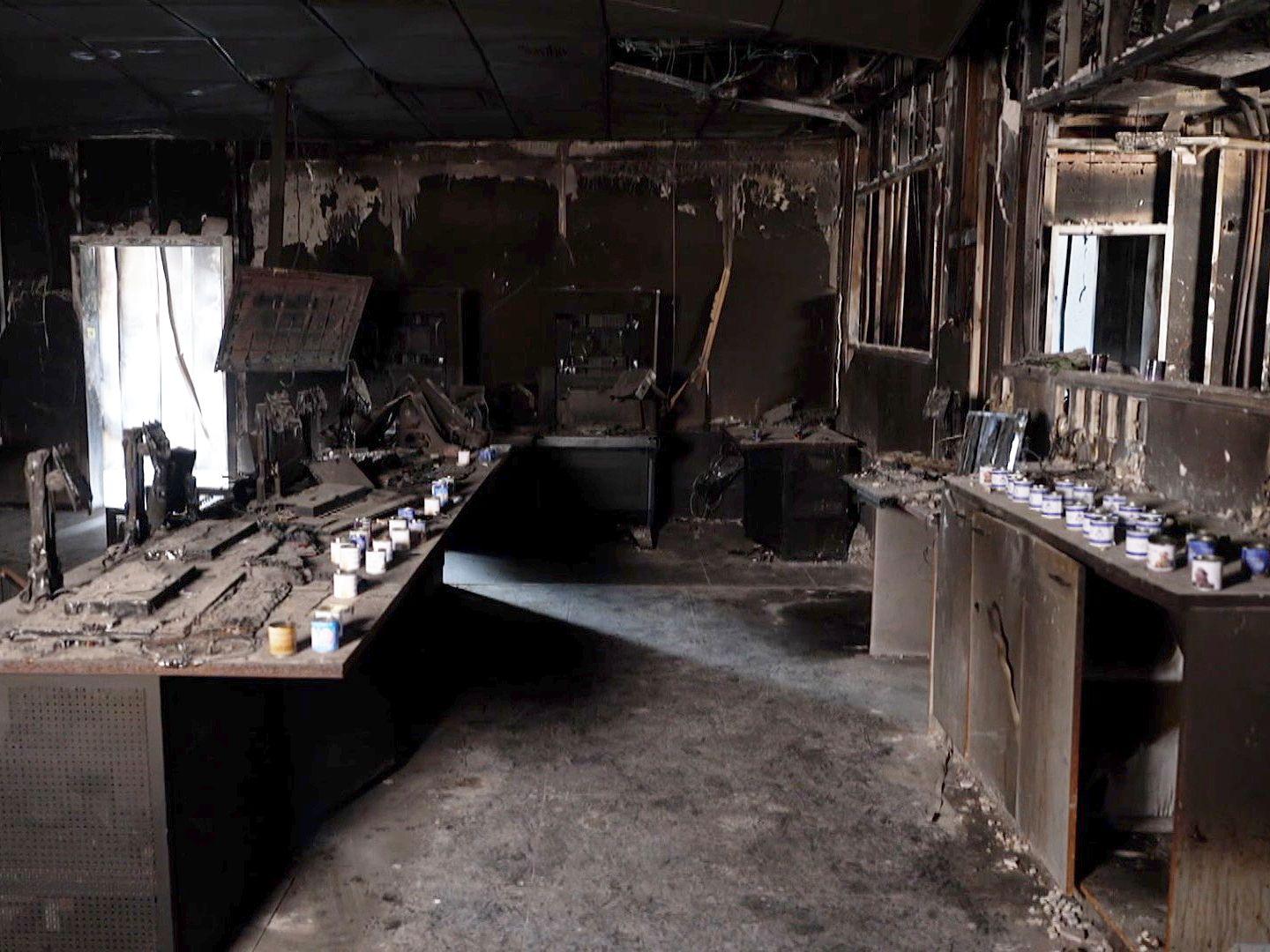
What was left of the smoke and fire-damaged war room
“The smoke was really thick. Everyone started to cough and suffocate. People start to fall and faint,” recalls Sharon.
One mother says she was told by the IDF that a “toxic substance” had been used by Hamas, external in the attack, though others were not aware of this detail or said the IDF had since changed its account on this.

At about 12:30, seven people in the Hamal - including Sharon - managed to feel their way to the toilet window and climb out, according to accounts of those there that day.
There, she and the other survivors waited for more to follow. But no-one came. Sharon was the only survivor among the Tatzpitaniyot on shift that day. One other young woman in the unit, who was at the base but not working that morning, also survived.
By the end of 7 October, the military had regained control, but many of those stationed there did not survive the day. Seven Tatzpitaniyot were taken back to Gaza as hostages, where one was killed, another rescued and five still remain.
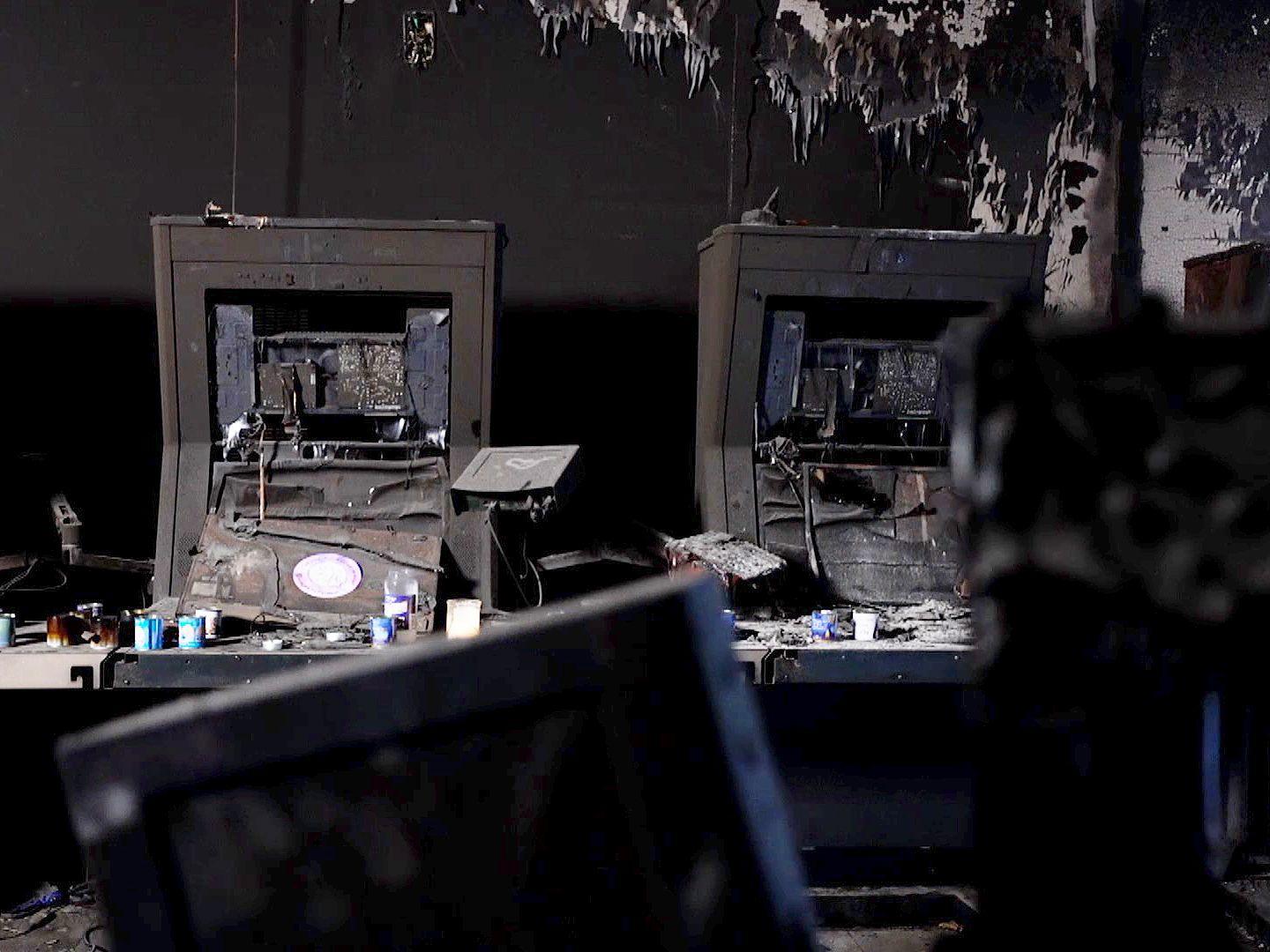
Two fire-damaged workstations in the Hamal
Across Israel that day, about 1,200 people - including more than 300 soldiers - were killed and 251 others were taken hostage. Since then, more than 41,000 Palestinians have been killed as a result of Israeli military action in Gaza, the Hamas-run health ministry says.
The Nahal Oz dead were to include Alroy the balloonist and four comrades, who had engaged in a lengthy battle with Hamas, says his father, citing information given to him by the IDF.
They managed to kill close to 10 gunmen, he said, but the five were outnumbered and were all found dead inside a mobile shelter at 14:30.
The war room - which had been designed as a safe space for the base’s units - was destroyed. Photos and videos show it charred, the screens the Tatzpitaniyot had been carefully monitoring, blackened. Bone fragments were found among the ashes there.
The survivors and the families of those killed and kidnapped are left with unanswered questions about how it went so wrong.
Additional reporting by Jon Donnison and Naomi Scherbel-Ball